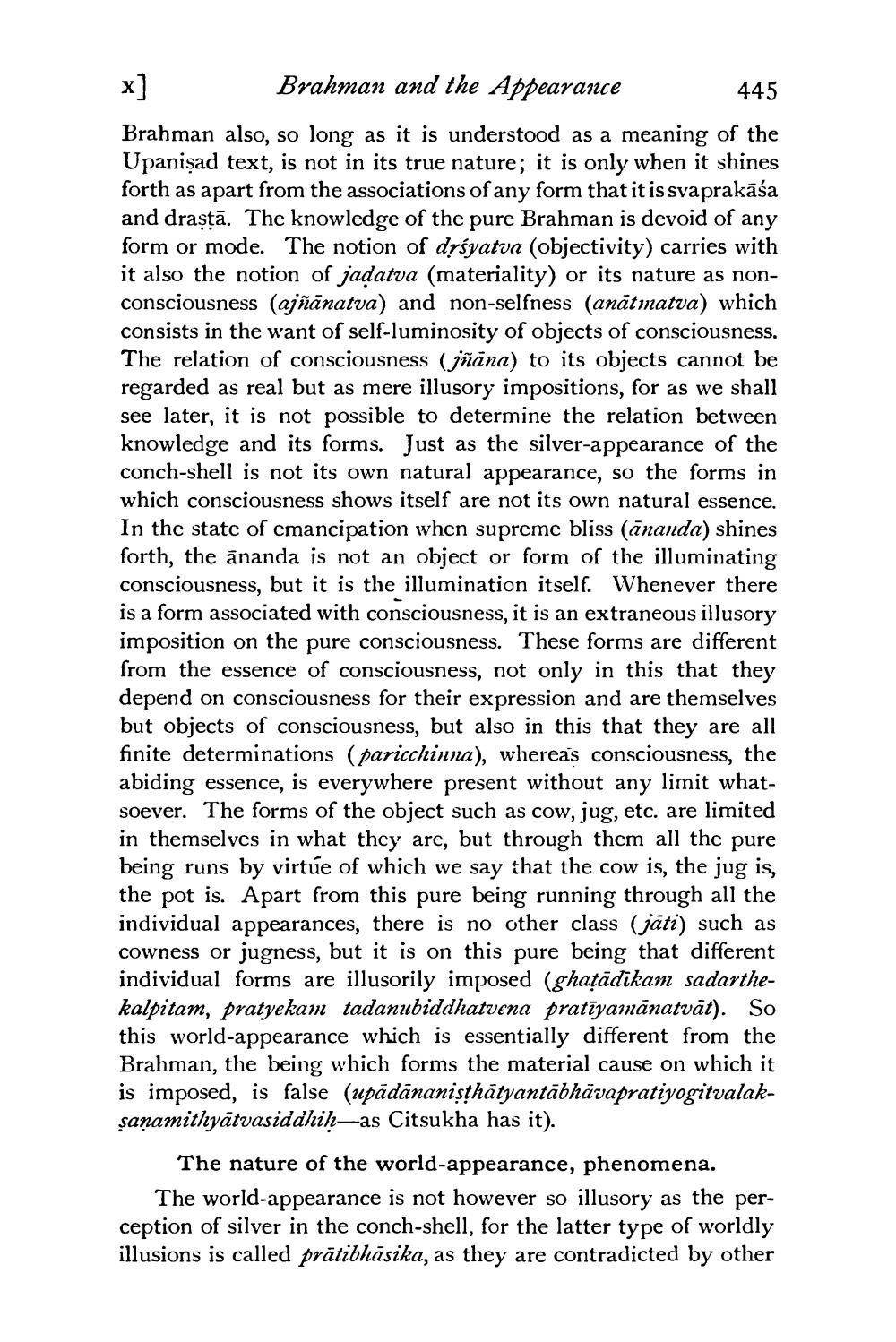________________
Brahman and the Appearance
445
Brahman also, so long as it is understood as a meaning of the Upanişad text, is not in its true nature; it is only when it shines forth as apart from the associations of any form that it is syaprakāśa and drastā. The knowledge of the pure Brahman is devoid of any form or mode. The notion of drśyatva (objectivity) carries with it also the notion of jadatva (materiality) or its nature as nonconsciousness (ajñānatva) and non-selfness (anātmatva) which consists in the want of self-luminosity of objects of consciousness. The relation of consciousness (jñāna) to its objects cannot be regarded as real but as mere illusory impositions, for as we shall see later, it is not possible to determine the relation between knowledge and its forms. Just as the silver-appearance of the conch-shell is not its own natural appearance, so the forms in which consciousness shows itself are not its own natural essence. In the state of emancipation when supreme bliss (ānanda) shines forth, the ānanda is not an object or form of the illuminating consciousness, but it is the illumination itself. Whenever there is a form associated with consciousness, it is an extraneous illusory imposition on the pure consciousness. These forms are different from the essence of consciousness, not only in this that they depend on consciousness for their expression and are themselves but objects of consciousness, but also in this that they are all finite determinations (paricchinna), whereas consciousness, the abiding essence, is everywhere present without any limit whatsoever. The forms of the object such as cow, jug, etc. are limited in themselves in what they are, but through them all the pure being runs by virtue of which we say that the cow is, the jug is, the pot is. Apart from this pure being running through all the individual appearances, there is no other class (jäti) such as cowness or jugness, but it is on this pure being that different individual forms are illusorily imposed (ghatādikam sadarthekalpitam, pratyekam tadanubiddhatvena pratīyamanatvāt). So this world-appearance which is essentially different from the Brahman, the being which forms the material cause on which it is imposed, is false (upādānanisthātyantābhāvapratiyogitvalakşaņamithyātvasiddhiḥ—as Citsukha has it).
The nature of the world-appearance, phenomena. The world-appearance is not however so illusory as the perception of silver in the conch-shell, for the latter type of worldly illusions is called prātibhāsika, as they are contradicted by other




